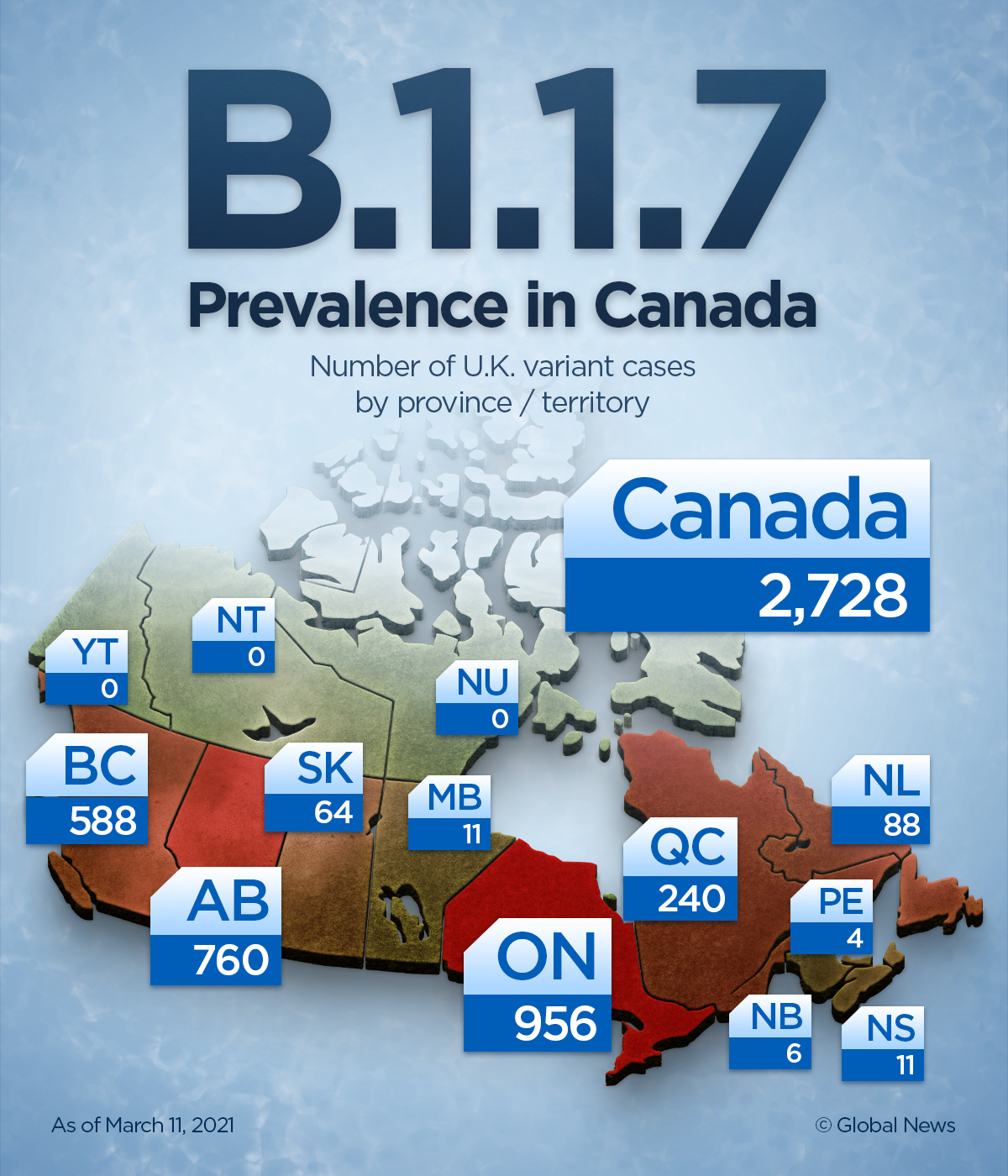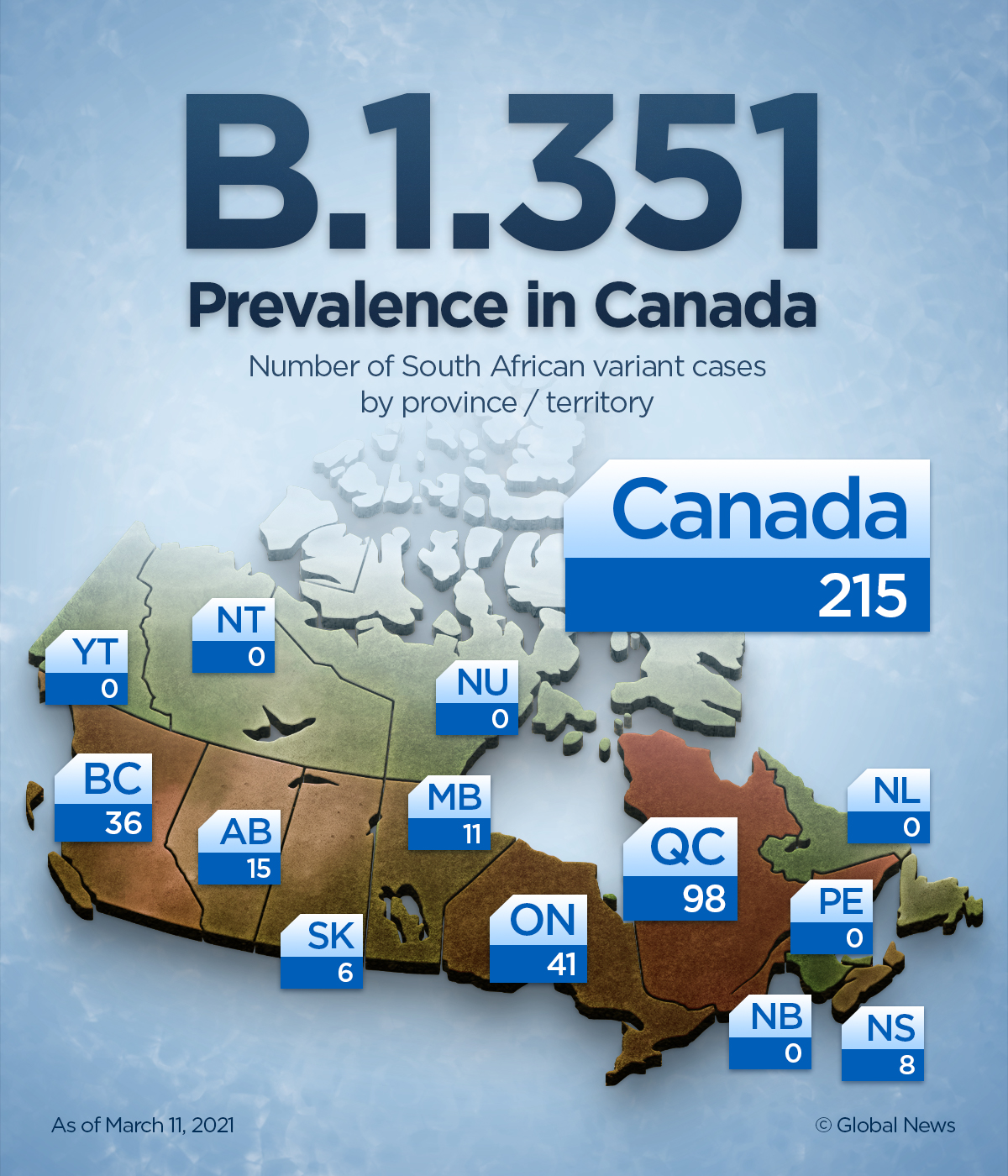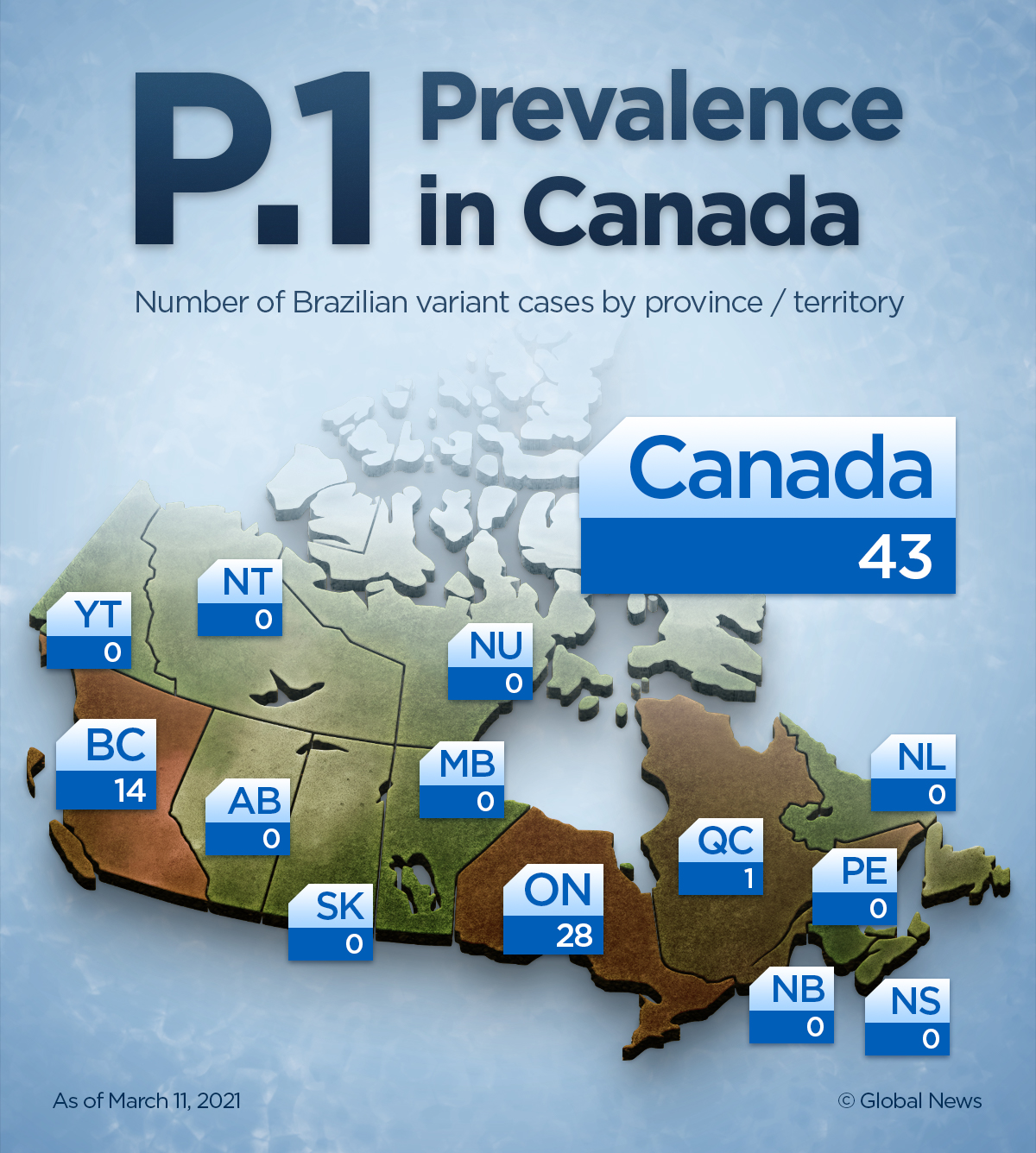Coronavirus cases and outbreaks of new more transmissible variants are continuing to increase across Canada, raising concerns of a possible third wave of the ongoing pandemic in the country.

As of March 11, there were close to 3,000 confirmed cases of “variants of concern” (VOC) across all 10 provinces, with the B.1.1.7 variant accounting for more than 90 per cent of these cases. The B.1.1.7 variant was first detected in the United Kingdom in mid-December.
All viruses mutate over time, but the pace of the spread and the reproductive rate of the new variants in the country is “very concerning,” experts say.
“We are starting a variant-driven third wave now,” said Colin Furness, an infection control epidemiologist and assistant professor at the University of Toronto.

The province of Ontario has the highest number of variant cases – 956 of the U.K. variant, 41 of the B.1.351 variant and 28 of the P.1 variant — those variants were first discovered in South Africa and Brazil respectively. The Ontario COVID-19 Science Advisory Table estimates that 41 per cent of the total cases are of VOCs.
Projections for Ontario released Thursday estimated that in the next two to three weeks, COVID-19 rates could grow to up to 8,000 new cases a day under the worst-case scenario, depending on the spread of variants.
Jean-Paul Soucy, an infectious disease epidemiologist and PhD student at the University of Toronto, noted that cases of the B.1.1.7 variant, which is responsible for an increasing fraction of infections across the country, were able to grow under lockdown conditions even as conventional COVID-19 cases shrank.
“We are facing a twindemic here,” he told Global News.

Alberta has the second-highest number of VOC cases (775), but has yet to report the P.1 variant. Alberta is followed by British Columbia and Quebec, where all three variants have been found.

Get weekly health news
Given B.1.1.7’s prevalence and competitive advantage in reproduction, Donald Sheppard, an immunologist and microbiologist at McGill University Health Centre, says Canada has passed the “tipping point” where it will replace the original strain of coronavirus.

Provincial modelling out of both Quebec and Ontario suggests that the B.1.1.7 variant could dominate in the provinces in a matter of weeks.
“The variants of concern continue to spread across Ontario and our ability to control the rate of spread will determine whether we return to normal, or we face a third wave of infection,” Dr. Adalsteinn Brown, the co-chair of Ontario’s COVID-19 Science Advisory Table, said during a news conference on Thursday.
Experts are concerned that the variants could also delay the end of the pandemic, that has now entered its second year.
“I fear the spread of more transmissible and potentially more deadly variants will lead to one last, preventable tragedy,” said Soucy.
Sheppard said had there been no variants of concern, we would be looking at winding down the pandemic over the summer.
On a positive note, however, there is emerging evidence that the current vaccines appear to be effective against the new variants.
However, a number of studies have shown decreased protection of the COVID-19 vaccines against the B.1.351 and P.1 variant. Both contain the E484K mutation in the spike protein of the virus, which appears to have an impact on the body’s immune response and vaccine efficacy.

Over the next few weeks and months, Canada is set to receive a heavy influx of vaccine supplies.
As a larger percentage of the population gets vaccinated, the mass vaccination campaigns will eventually help reduce transmission and suppress the variants, Soucy said.
But until then, public health measures and personal vigilance will be key, he said.
Furness predicts that schools will likely need to close briefly in April.
Meanwhile, as daily case counts have stabilized, a number of provinces have eased restrictions in recent weeks.
“If we take a more gradual approach to reopening and take a proactive approach in regions to halt accelerating growth, I think we will be in great shape for a COVID-safe summer and a vigorous vaccination campaign to lead us out of this mess,” Soucy said.











Comments